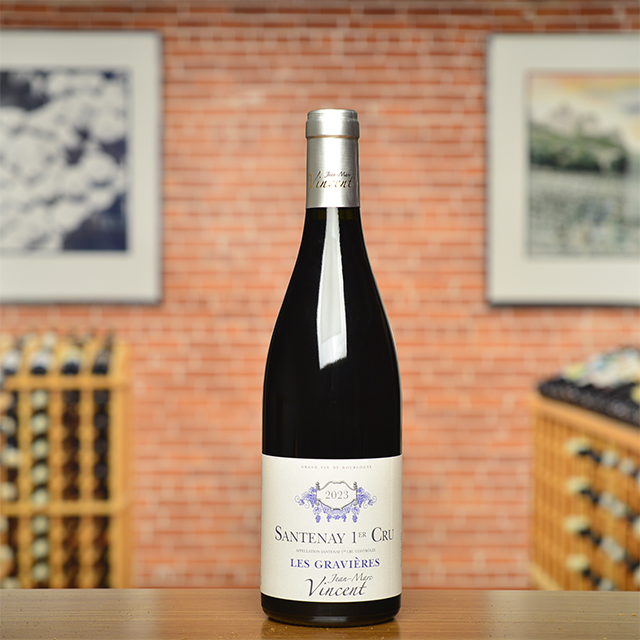Notify me
2023 Valle d’Itria Minutolo “Rampone”
I Pástini
The exotic perfume of this white, made from the rare Minutolo grape, will take you straight to the sunny shores of Puglia, savoring a crisp aperitivo in an enchanting seaside village where worries and cares seem to drift right up into the clear blue sky. Minutolo nearly went extinct decades ago, but dedicated local farmers replanted to ensure its survival. Crudo is my favorite pairing, but a bowl of Castelvetrano olives will more than do the trick with this salty, invigorating white scented of jasmine and lemon verbena.
—Anthony Lynch
| Wine Type: | white |
| Vintage: | 2023 |
| Bottle Size: | 750mL |
| Blend: | Minutolo |
| Appellation: | Valle d’Itria IGP |
| Country: | Italy |
| Region: | Puglia |
| Producer: | I Pástini |
| Winemaker: | Gianni Carparelli |
| Vineyard: | 3.5 ha, planted in 2001 |
| Soil: | Red clay, limestone |
| Farming: | Organic (certified) |
| Alcohol: | 12.5% |
More from this Producer or Region

2024 Valle d’Itria Spumante Brut
Italy | Puglia
Verdeca, a specialty around the town of Locorotondo, stars in this bottling that drinks like a southern Prosecco: light, crisp, and citrusy, with a playful bead.

2024 Valle d’Itria Bianco “Faraone”
Italy | Puglia
A crisp white wine from a hot climate almost seems like a magical impossibility, yet here’s one, and a delicious one at that.

2024 Valle d’Itria Rosato “Le Rotaie”
Italy | Puglia
A delicious aperitivo, it can seamlessly pair with anything you throw its way.

2024 Valle d’Itria Minutolo “Rampone”
Italy | Puglia
December Club Bianco ~ Crafted from the local variety Minutolo, Pástini’s Rampone preserves lip-smacking acidity and low alcohol despite the baking-hot Puglian summers

2024 Locorotondo Bianco “Antico”
Italy | Puglia
Open this alongside a bowl of fennel taralli, the donut-shaped Puglian cracker that has become my go-to aperitivo snack.
 /
/
About The Producer
I Pástini
I Pástini is a small, family-run winery in the Valle d’Itria in eastern central Puglia. Founded by Gianni Carparelli and his father Donato, they grow three local white grapes, Verdeca, Bianco d’Alessano, and Minutolo, and the local red grape, Susumaniello, on land their ancestors worked: a beautiful limestone plateau overlooking the Adriatic Sea that is co-planted to ancient, (multi-millennia old!), olive groves.
After vinifying their wines in a neighbor’s cantina for a number of years they built their own winery and cellars, which came online in 2012. They are currently nearing the end of their organic conversion in the vineyards and will be certified organic starting with the 2019 vintage.
About The Region
Puglia

Puglia is Italy’s second most prolific wine-producing region (after the Veneto) and for decades was known as a source of bulk wine. But today, the heel of the boot is more than ever focused on quality, as ambitious growers seek to take advantage of the area's abundant natural riches to produce wines of character and identity. The hot, dry climate and marine influence from the long Adriatic coastline predispose Puglia to growing high-quality fruit, while a wealth of fascinating indigenous grape varieties thrive in these conditions. Changing fashion and a growing respect for the region's mostly calcareous terroirs have breathed fresh air into the Puglian wine scene, and with more than thirty distinct appellations, it is home to a tremendous variety of styles.
While the region is best known for inky, concentrated reds from grapes such as Primitivo and Negroamaro, the first KLWM Puglian imports are in fact white wines—aromatic charmers made from native varieties including Verdeca and the rare Minutolo. They hail from central Puglia’s Valle d’Itria, a plateau that shares a relatively flat topography and limestone soils with the Salento peninsula in the south. The north, in contrast, is hillier and features grapes more common to southern and central Italy including Montepulciano, Sangiovese, and Trebbiano.
Puglian wines are the product of intense southern sunshine and an ancient history of viticulture. With other local specialties including olive oil and burrata, the region has enormous potential for delicious combinations.
More from Puglia or Italy
2024 Valle d’Itria Rosato “Le Rotaie”
I Pástini Italy | Puglia
2024 Valle d’Itria Minutolo “Rampone”
I Pástini Italy | Puglia
2024 Toscana Rosato
Sesti Italy | Tuscany
2024 Valle d’Itria Spumante Brut
I Pástini Italy | Puglia
2024 Valle d’Itria Bianco “Faraone”
I Pástini Italy | Puglia
2017 Alzero Cabernet
Giuseppe Quintarelli Italy | Veneto
2024 Valle d’Aosta Cornalin
Château Feuillet Italy | Valle d’Aosta
2024 Locorotondo Bianco “Antico”
I Pástini Italy | Puglia
2024 Vino Rosso “Il Goccetto”
Tenuta La Pergola Italy | Piedmont
2022 Eloro Nero d’Avola “Spaccaforno”
Riofavara Italy | Sicily
2015 Recioto della Valpolicella Classico
Giuseppe Quintarelli Italy | Veneto
2020 Vino Bianco “Modestu”
Giovanni Montisci Italy | Sardinia
2024 Valle d’Itria Rosato “Le Rotaie”
I Pástini Italy | Puglia
2024 Valle d’Itria Minutolo “Rampone”
I Pástini Italy | Puglia
2024 Toscana Rosato
Sesti Italy | Tuscany
2024 Valle d’Itria Spumante Brut
I Pástini Italy | Puglia
2024 Valle d’Itria Bianco “Faraone”
I Pástini Italy | Puglia
2017 Alzero Cabernet
Giuseppe Quintarelli Italy | Veneto
2024 Valle d’Aosta Cornalin
Château Feuillet Italy | Valle d’Aosta
2024 Locorotondo Bianco “Antico”
I Pástini Italy | Puglia
2024 Vino Rosso “Il Goccetto”
Tenuta La Pergola Italy | Piedmont
2022 Eloro Nero d’Avola “Spaccaforno”
Riofavara Italy | Sicily
2015 Recioto della Valpolicella Classico
Giuseppe Quintarelli Italy | Veneto
2020 Vino Bianco “Modestu”
Giovanni Montisci Italy | Sardinia
Our Guarantee

Our Guarantee
We only import wine we drink and enjoy ourselves, directly from the source.
Our wine tastes the same in your home as it did where it was bottled in Europe.
Like the long-term relationships we build with growers, we build long-term relationships with our clients. Have a question? Need wine advice? Just give us a call—510-524-1524.














